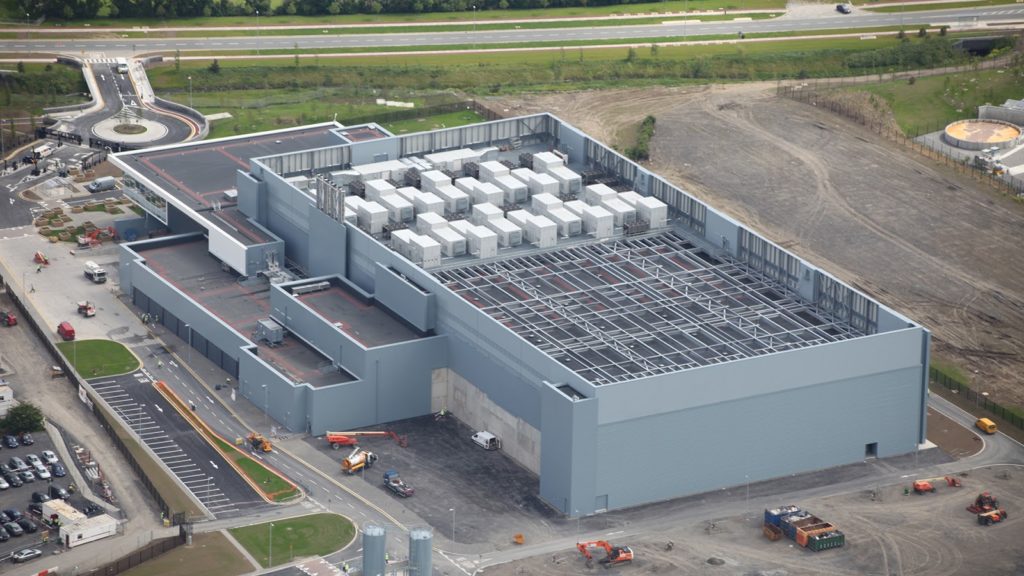Cloud computing has been a hot topic over the past decade or so.
Corporate giants Amazon, Google, and Microsoft each built out massive cloud computing businesses. And today they fight with each other tooth and nail for cloud market share.
The buzz around “the cloud” took a backseat to artificial intelligence (AI) this past year. That’s thanks to generative AI like ChatGPT. Still, chances are that most of us utilize the cloud in some capacity every day.
If we store files using services like Google Drive, Microsoft OneDrive, and Dropbox then we’re using the cloud.
If we have Apple’s iCloud or Google Photos automatically store the pictures we take with our smart phone, we’re using the cloud.
If we use home security services that allow us to view videos and photos taken by our security cameras via a smart phone app, we’re also using the cloud.
I’d wager that most of us are using the cloud in at least one of these ways. And these are just the three areas on my radar today. There are all kinds of other applications.
That being the case, I think there’s an important question we should ask. What is the cloud?
And the answer is that the cloud is not at all like what it sounds…
The cloud is nothing more than one of millions of computers running in massive industrial data centers.
There are over 5,300 data centers in the US today. The average data center size is roughly 100,000 square feet. And each of them – along with the computers inside of them – are owned by various corporations.
Here’s a snapshot of one of the data centers Microsoft uses for its Azure cloud offering:
I don’t know about you, but nothing about this screams “cloud” to me. What a misleading term.
We talked yesterday about how our smart phones secretly harvest our data and send it back to Apple and Google. I know plenty of people don’t care too much about this. But I do. To me this is a violation of privacy and digital sovereignty.
Well, many of us are also handing over even more sensitive data to faceless corporations voluntarily… via the cloud.
To be fair we’re doing this because we value the service and convenience provided to us.
The reason I mentioned those three examples above – file storage, automatic photo storage, and home security monitoring – is because I have been doing them myself.
They are good services. And quite convenient. So I didn’t think much about what was happening to my data.
But guess what?
There’s no reason why we should trust our data to corporations powering “the cloud”. Given that the average cost of memory storage has decreased nearly 88% since 2009, it’s feasible for each of us to set up our own cloud network at home.
We do this by running our own server on our home network. We can find high quality server hardware with 2 TB of storage for as little as $349 right now. That’s it.
And these servers come with open source software installed. The software makes it easy for us to set up our own cloud computing system.
For example, we can save all our computer files on our own server. Then we can access those files remotely from any computer or laptop.
Such a system is like our personal Dropbox… except our data never leaves our own network.
We can also ditch iCloud and Google Photos and store the pictures we take with our smart phones on our home server. That way nobody else has access to our personal family photos.
Then we can direct our home security system to upload footage to our server, opposed to the corporate cloud. That way we can keep tabs on everything without putting any sensitive data at risk.
And that’s just the start of what’s possible…
We talked last week about how Bitcoin can power America’s localist renaissance forward. Well, we could run a Bitcoin node on our home server and then connect our phone’s Bitcoin wallet to it.
This would allow us to verify our transactions directly on our own node. That can make our transactions faster and cheaper.
And at the same time running a node strengthens the Bitcoin network’s security. And it gives us a voice when it comes to governance and upgrade proposals.
Put it all together and we can reclaim control over our data and our privacy – which also enhances our security. That’s the recipe to digital sovereignty in the modern age.
-Joe Withrow
P.S. Setting up a home server is much easier than it may sound. Do-it-yourself (DIY) enthusiasts can turn pretty much any computer into a home server. But for those who prefer an out-of-the-box solution, check out Start9 right here: https://start9.com/.
